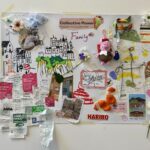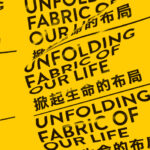Regarding the Blog
Your blog shows your thought process about the project. You have integrated a large amount of literature and field research. From the source of inspiration, field exploration, to the consideration of details, you have achieved a progressive development. I can clearly understand your deepening and thinking on the project. You have promptly reflected and summarized on every collective discussion and practical activity. You have accurately expressed “What can I learned”, for instance, in the field investigation at the Royal Botanical Garden, you concluded that “exhibition can establish a closer connection with the environment in terms of space design and theme planning.” However, in your blog, there is less discussion on artists and artworks. As an emerging curator, you need to consider the possibility of exhibiting art works. In future blogs, it would be beneficial to pay more attention to this aspect.
Regarding the personal project
During the reading and reflection on this curatorial project, I felt your profound concern for the issue of women’s marginalization. You focused on women’s invisible labor in society, aiming to reveal the structural roots of gender bias. From the perspective of curatorial concept, you not only pay attention to the exhibits, but also emphasize the connection between the exhibition space and daily life. You use the family space as an exhibition site, trying to break the inherent mode of traditional galleries, and innovate to show the real scene of women’s invisible labor. This cross-border thinking is forward-looking and transformative.
However, although the project has a high depth in theory, it lacks a concrete and operational exhibition design and implementation plan. You have clearly divided the exhibition into three parts. I think this structure is very clear and has a progressive effect, enabling the audience to have a deeper understanding of the theme. But how to handle the spatial structure of the exhibition to achieve the three parts you mentioned? Considering the budget and your status as an emerging curator, it is necessary to further design the exhibition route. You can appropriately reduce the scale of the exhibition and create an exhibition experience in the family space that can present both theoretical depth and interactive, which is the key to further exploration and practice.You can refer to Artificial Hells: Participatory Art and the Politics of Spectatorship to deepen your inspiration and ideas for participation and interaction.
In addition, you proposed forms such as “oral history, video records, and interactive installations”, but did not specifically explain how to express abstract concepts through these art media. For example: How can interactive installations show the “invisibility” of emotional labor? Can you design for the audience to simulate the stress of handling family tasks? In your curatorial design, there is a lack of detailed consideration of the interaction logic between the exhibits and the audience, which may weaken the practical effect of the exhibition.
Finally, although you have clearly defined four types of audiences, there is a lack of differentiated participation design. For example, for male audiences, they may have difficulty intuitively experiencing and understanding women’s invisible labor. For example, setting up an experience area for them to simulate handling family conflicts and emotional stress.
Overall, I hope this project can promote art institutions to play a more active role in gender equality issues!
References
Bishop, C., 2023. Artificial hells: Participatory art and the politics of spectatorship. Verso books.



